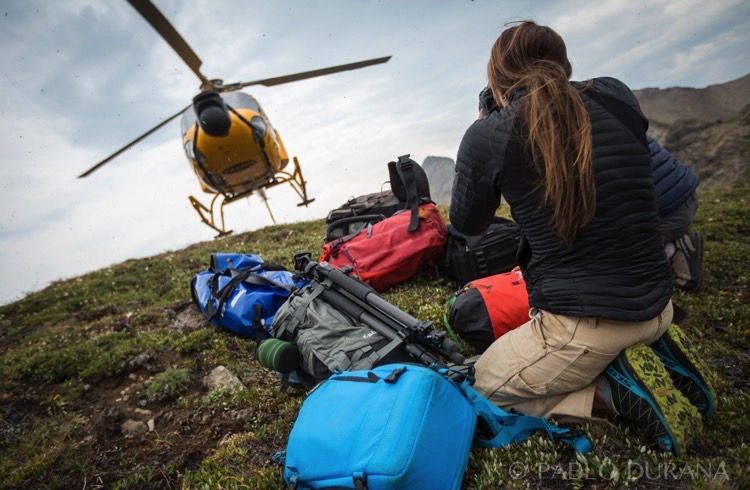The Ultimate Mobile Phone Photography Guide
It’s never been easier to take world-class photos on your phone. But where to start? Here’s our beginner’s guide to taking photos on your device.
Shares
 Photo © Rui Xu
Photo © Rui Xu
Photography has been transformed in recent years by the advent of powerful mobile devices with excellent built-in cameras. While, even a few years ago, the quality of mobile phone cameras was low, in 2019 you would be hard pressed to tell the difference between a picture taken on a mobile phone and one taken on a traditional camera.
This is great news for travelers who don’t want to fork out for or carry bulky camera equipment with them on the road. All the equipment featured below is lightweight and will easily fit into a carry-on bag.
If you want to master the art of mobile phone travel photography, where should you start?
Choosing the right phone
There’s a huge range of powerful mobile phone cameras to choose from
The Huawei P30 Pro claims to be the best camera phone around, with its 40MP main lens, an 8MP telephoto lens (you can zoom x50), and a 20MP ultra-wide lens. It also uses a RYYB sensor (red yellow yellow blue), instead of the industry standard RGB (red green blue) – this just means it allows the camera to capture more light, adding greater depth to your images. It’s not cheap (expect to pay US$700 depending where in the world you are).
A close competitor is the Google Pixel 3, which has front (8MP) and rear (12.2MP) cameras, which means you can do everything from zooming in for detail shots in low light to creating large-scale panorama shots. Prices differ depending on the market, but expect to pay around US$650.
The iPhone has been at the forefront of the mobile photography revolution, and its latest models – the XS and XS Max – both offer hefty 12MP dual rear cameras. While there are other more powerful cameras on the market, iPhone’s interface is as good as it gets; it’s simple, clutter-free and allows you to take great photos without worrying about the technology. The 6.5-inch display on the XS Max also offers a huge viewfinder, although you pay for the privilege: expect to pay US$999 for the XS and US$1,099 for the XS Max.
Last, but not least is the Samsung Galaxy S10 Plus. The South Korean company has upped its mobile phone game in recent years, and the S10 Plus is a great piece of kit. From the 123-degree ultra-wide lens to the triple-lens rear camera and a huge 6.4 inch screen, this is an exceptionally versatile mobile camera. It costs US$999.
Mobile photography add-ons
The range of mobile photography add-ons is growing, with a range of lenses, tripods and gimbals available if you want to take your mobile photography to the next level.
Moment has a range of lenses and add-ons which can give your photos the boost they need. Here are three of their most popular lenses:
Fisheye lens: this creates a much wider shot than normal, resulting in a slightly curved 'fish-eye' effect. While this lens can produce interesting photos it can, in the wrong hands, be a bit gimmicky, so use sparingly.
58mm tele portrait lens: this lens allows you to magnify the subject of your photo, and 'zoom in' on it. The 58mm, while not as powerful as traditional camera lenses, allows you to x2 optical zoom.
Macro lens: the macro lens allows you to capture the tiniest details – perfect for taking photographs of flowers, insects or food.
Other add-ons include tripods, gimbals, sliders and LED light kits. Don't get too wrapped up in the accessories, however. It's important to first understand the basics of photography, and from there, you can
Understand the limitations
For all the developments in mobile phone technology, you still need to be aware of the limitations of your camera phone. You obviously won’t get the same quality as you would in a DLSR or mirrorless camera, so be aware of what type of shots work best on your phone.
For example, mobile phone cameras generally have poor depth of field (the depth the camera can take photographs before things get blurry), which is why taking photos of flat surfaces (doorways, walls, etc) look much better than say, photos of crowded markets or groups of people.
Decide on a style
The best mobile phone photographers have a signature style – and while it's good to understand a broad range of styles when you are starting out, it's a good idea to focus on what are both good at and enjoy. Maybe that's taking photos of architecture, people, landscapes or wildlife. Of course, you may start off taking photographs in many different styles and eventually decide you like taking abstract photos, or photos of people, or detail shots. There's no right or wrong to this; it's important to have fun, be creative and do what comes naturally to you.
Editing your photos
There’s a whole range of photography apps, ranging from the useful to the pointless, but again it's important not to get too caught up in the sheer choice on offer – no filter will make a bad photograph good, so remember to use these sparingly.
While Instagram has a range of filters, its popularity these days is due to the size of the potential audience. If you want to promote your images or build up a following, you simply have to be on Instagram. For actual photo editing, there's a lot better out there – here are some of the best:
Afterlight 2:
One of the most regularly updated photo apps, Afterlight 2 offers a huge range of editing options such as Curves, Selective Hue and Tone. It’s one of the easiest photo apps to use, and has some rather interesting functions, such as the ability to zoom in on your photos while editing and the ability to create your own filters. It costs US$2.99 for a one-off download with no other costs, so it's very good value.
VSCO Cam
VSCO Cam is like Instagram’s cooler, more functional older brother – it has a range of editing tools (including exposure, contrast and alignment) as well as a whole range of filters and pre-sets. The basic version is free, but you will pay $US19.99 a year for the advanced version.
Carbon
Developed for photographers who specialize in black and white imagery, Carbon has range of monochrome filters that were apparently developed with photographers. The app is free, although to unlock all the options, it'll cost you a one-off payment of US$20.
Lightroom CC
Lightroom CC is probably the best photo editing app on the market, which is no surprise given it's created by Adobe. It can also link to your a desktop version, so you can finish off your edits at home. The free version will be enough for most photographers, but if you want access to all the options, you'll pay US$14.99 for the first year, US$19.99 a year thereafter.
So, you have your phone, your apps and your add-ons – now all you need to do is get out there and start photographing. Whether you want to photograph deserts, rainforests, wildlife or landscapes, it's meant to be fun, so enjoy yourself!
Related articles
Simple and flexible travel insurance
You can buy at home or while traveling, and claim online from anywhere in the world. With 150+ adventure activities covered and 24/7 emergency assistance.
Get a quote


3 Comments
Mobile phones take better pictures than dlsrs now
I appreciate the information...
Interesting stuff about tutorial program philippines! I'll probably share this with some of my friends. Thanks again for posting it.